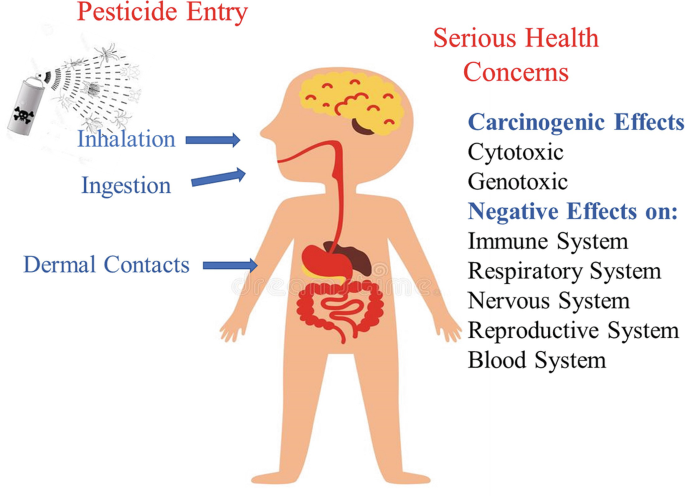The 9-Second Trick For Eco Bed Bug Exterminators Dc
Eco Bed Bug Exterminators Dc Can Be Fun For Everyone
Table of ContentsSome Known Details About Eco Bed Bug Exterminators Dc Eco Bed Bug Exterminators Dc Can Be Fun For AnyoneOur Eco Bed Bug Exterminators Dc IdeasHow Eco Bed Bug Exterminators Dc can Save You Time, Stress, and Money.Unknown Facts About Eco Bed Bug Exterminators Dc
Due to the fact that chemicals are hazardous, they are also possibly dangerous to people, animals, various other organisms, and the atmosphere. Individuals that use pesticides or routinely come in contact with them should recognize the family member toxicity, prospective wellness results, and preventative measures to minimize direct exposure to the items they use. Hazard, or threat, of making use of pesticides is the potential for injury, or the level of risk involved in making use of a pesticide under a given collection of conditions.
Applicators can minimize or virtually get rid of direct exposure-- and hence lower risk-- by following the tag guidelines, using personal protective apparel and equipment (PPE), and taking care of the pesticide correctly. As an example, greater than 95 percent of all pesticide direct exposures come from dermal direct exposure, primarily to the hands and lower arms. By putting on a set of unlined, chemical-resistant handwear covers, this sort of direct exposure can be almost removed.
The unsafe impacts that take place from a single exposure by any type of path of entrance are termed "acute effects." The 4 routes of direct exposure are facial (skin), inhalation (lungs), oral (mouth), and the eyes. Severe toxicity is identified by checking out the dermal poisoning, breathing poisoning, and dental toxicity of examination pets.
What Does Eco Bed Bug Exterminators Dc Do?
Severe poisoning is measured as the amount or focus of a toxicant-- the a.i.-- required to kill 50 percent of the animals in a test population. This procedure is generally shared as the LD50 (dangerous dosage 50) or the LC50 (deadly concentration 50). Furthermore, the LD50 and LC50 values are based on a single dosage and are taped in milligrams of pesticide per kilo of body weight (mg/kg) of the guinea pig or in components per million (ppm).
The reduced the LD50 or LC50 worth of a chemical product, the higher its poisoning to humans and pets. Chemicals with a high LD50 are the least hazardous to humans if made use of according to the instructions on the item tag. The chronic poisoning of a chemical is figured out by subjecting examination animals to long-term direct exposure to the energetic component.
The chronic toxicity of a chemical is harder than acute toxicity to establish via laboratory analysis. Products are categorized on the basis of their loved one intense poisoning (their LD50 or LC50 worths). Chemicals that are categorized as very hazardous (Toxicity Category I) on the basis of either oral, facial, or inhalation poisoning should have the signal words DANGER and poisonous substance published in red with a skull and crossbones symbol plainly showed on the front panel of the package tag.
The acute (solitary dosage) dental LD50 for chemical products in this group ranges from a trace amount to 50 mg/kg. Exposure of a few declines of a material taken by mouth can be fatal to a 150-pound person. https://peatix.com/user/21474436/view. Some pesticide products have just the signal word DANGER, which informs you absolutely nothing regarding the acute poisoning, simply that the item can cause severe eye damage or severe skin irritation
6 Easy Facts About Eco Bed Bug Exterminators Dc Described
In this classification, the intense oral LD50 ranges from 50 to 500 mg/kg. A tsp to an ounce of this material can be fatal to a 150-pound individual (bed bug treatment). Pesticide products classified as either a little poisonous or relatively harmless (Poisoning Groups III and IV) are required to have the signal word CAUTION on the chemical tag

All pesticide poisoning values, consisting of the LD50, can be discovered on the item's Material Security Data Sheet (MSDS) - exterminator DC. Chemical tags and MSDS can be acquired from stores or produces. Furthermore, most items likewise know that can be discovered on the Internet. The signs and symptoms of chemical poisoning can range from a mild skin irritation to coma or also fatality.
People likewise vary in their sensitivity to various degrees of these chemicals. Some people may reveal no reaction to a direct exposure that might create extreme ailment in read more others (bed bug exterminator). Due to possible health issues, chemical users and trainers need to acknowledge the usual symptoms and signs of pesticide poisoning. The impacts, or symptoms, of pesticide poisoning can be extensively specified as either topical or systemic.
The Buzz on Eco Bed Bug Exterminators Dc
Dermatitis, or inflammation of the skin, is approved as the most commonly reported topical effect associated with chemical exposure. Some people tend to cough, wheeze, or sneeze when revealed to pesticide sprays.
This symptom usually subsides within a couple of mins after a person is gotten rid of from the direct exposure to the toxic irritant. However, a reaction to a chemical product that causes somebody not just to sneeze and cough but also to create serious intense respiratory signs is more probable to be a true hypersensitivity or allergic reaction.
Systemic effects are rather different from topical results. They typically happen away from the initial factor of contact as an outcome of the chemical being taken in into and distributed throughout the body.